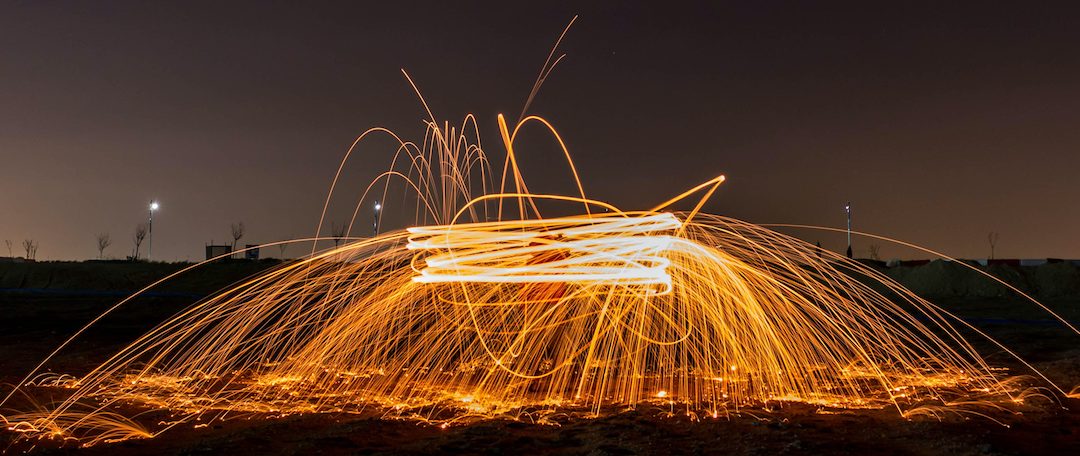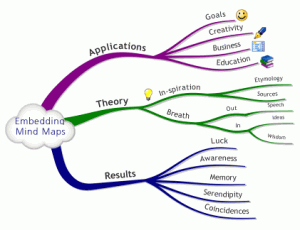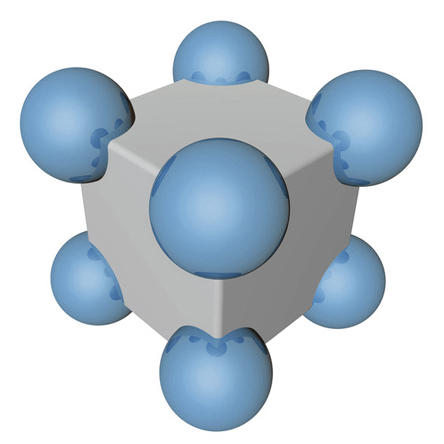
by Tom Evans | Mar 19, 2021 | Chatting
 My guest on this podcast is Stephanie James – a psychotherapist, transformational life coach, presenter, radio show and podcast host, author and film maker, so somewhat of a polymath.
My guest on this podcast is Stephanie James – a psychotherapist, transformational life coach, presenter, radio show and podcast host, author and film maker, so somewhat of a polymath.
In this podcast, we chat about the nature, source and infectiousness (in a nice way) of a spark.
We start from where the word ‘spark’ came from in the first place and then find out what first ‘sparked’ Stephanie off.
Topics covered :
- The spark within us
- How sparks cascade
- The source of sparks
- How to rekindle a dampened spark
- The importance of grounding
- Book-ending your day
- Marinating a spark – in dream time
- Are sparks internal or external – or both?
- Using the breath to really ignite the spark
- The different forms that sparks appear in
- Embracing all forms of emotions – that then spark things off
- The 12 Lights of the Round Table
- The other side of the Surrender Point
- Awakening to a new way of being & the gift of another day
- When Sparks Ignite : the movie : watch the trailer below
Links from the Podcast
Stephanie’s web site
The Spark Book
When Sparks Ignite : The Film
by Tom Evans | Oct 7, 2014 | Timing
 Biologists have a pretty good handle on the purpose and function of the breath. On the in breath, we take oxygen on board and on the out breath, we expel toxic carbon dioxide. If our lungs are clogged, our airways are blocked or our air supply removed, it doesn’t bode well for us. Breathing is essential to life.
Biologists have a pretty good handle on the purpose and function of the breath. On the in breath, we take oxygen on board and on the out breath, we expel toxic carbon dioxide. If our lungs are clogged, our airways are blocked or our air supply removed, it doesn’t bode well for us. Breathing is essential to life.
The breath though has some other more subtle, yet vital roles which are not generally recognised.
1. Powering Inspiration
Most people speak on the out breath (apart from some Icelandic people and some flautists I discovered).
Try and speak on an in breath to find out what I mean.
Our language, as always, gives somewhat obvious clues as to what is really going on. When we speak we voice our ’aspirations’. The in breath is of course the ’in-spiration’ phase of the whole re-spiration process. It is this ’in-breathing’ process that fires up our imagination and brings in ideas.
So if you find yourself stuck for inspiration, just close your eyes, breathe slowly and rhythmically for a couple of minutes. If you then pay attention to the still point between the in and out breath, the solution to your problem will just pop in ’out of nowhere’.
This works equally well if you go out for a walk (with your eyes open though).
2. Aiding creativity
Our neurons don’t store any oxygen so we need our breath just to think. As our brain uses 20-25% of our body’s energy, this is why it shuts down when we faint to protect our other vital organs.
So if you are starting a creative task, here’s a quick and simple way to give yourself an extra boost.
Close your right nostril with your right index finger and breathe in and out of your left nostril five times. You can do this at whatever speed feels right for you. This has the effect of oxygenating the right brain. Then use your left index finger to close your left nostril and oxygenate your left hemisphere by breathing through your right nostril five times. Repeat as necessary.
3. Controlling our Perception of Time
Time is not as fixed as is normally thought. It is both malleable and stretchable and affected by the speed of our consciousness.
By changing the speed of our breath, we can alter the perceived passage of time. It’s as simple as this. The faster we breathe, the faster time seems to pass. Slow your breath down and time elongates.
So it is just possible by controlling the speed of our breath, we can not only live longer but get more done in the time we do have on this special planet.
__________________________________________
Related Links
Slowing Down to Speed Up
Living Timefully
by Tom Evans | May 7, 2012 | Illuminating
 If you read and acted on the last post in this series, Seven Ways to Block Light Bulb Moments, well done – you’ve set up the conditions whereby light bulb moments to come your way.
If you read and acted on the last post in this series, Seven Ways to Block Light Bulb Moments, well done – you’ve set up the conditions whereby light bulb moments to come your way.
Rather than waiting for them to come in randomly though, there’s a few things you can do to stir them up and encourage them to occur.
________________________________________________
1. Environment
There is clutter and clutter. A completely sterile and clinically clean environment might look nice but will not stimulate the brain. On the flip side, a desk with piles of unfinished business piling up in an In Tray or covered in Post It Notes of things to do, can have a negative effect. A balance is recommended which implies a buzz is happening with positive results and sales wins are clear for all to see. Fill your office with creative resources such as white boards and a book library and ensure a room or space is available for people to meet and be inspiring.
2. Celebrate Success
In our busy days, we sometimes forget to take time out to pat ourselves on the back. This doesn’t mean you have to take the whole team down the pub every time you get a sale in. Have a stack of Mar Bars or a pile of iTunes or Amazon vouchers and dish them out appropriately.
3. Map your Minds
Mind Mapping is one of the most powerful and coolest tools for stirring up creativity. They can either be used for free association or to get your thoughts in order, plan a project or design a product or service. See Mapping your Mind for more on this. They become especially powerful when you work on them collectively and collaboratively. The maxim two heads are better than one grows exponentially when more heads get involved.
4. Appreciative Review
We can spend a fair amount of time analysing what went wrong. The culture of public enquiries and tendency of the press to report everything that’s bad just serves to fuel this type of negativity. When something ‘goes right’, there is much to be gained from working out what you did that was so good and then applying that wisdom to other processes in the business. Different parts of the brain get involved with this process and you will be amazed at the results.
5. Breathing
Breathing is something we all have to do, yet most people breathe very shallowly. Our neurons don’t store oxygen yet need it to function so learning to breathe properly and to pump prime your brain has great benefits to both creativity, health and well-being. Listen to this Getting in the Zone visualisation for 11 minutes – and why not play it at the start of your next creative meeting.
6. Meditation
Many people think it’s impossible to meditate and make their minds go quiet. In our busy days, the idea of wasting 10-20 minutes meditating sounds horrendous. I can testify personally that the days that I don’t meditate don’t flow so well and that when I meditate my days seem to be full of good luck, chance encounters and clients that seem to find me ‘by accident’. Listen to How to Quieten Your Mind to experience the meditative state.
7. Trust your Gut
The most successful business people pride themselves on trusting their gut. It is now known by neuroscientists that our gut has more neurons than a cat’s brain and works about 5 to 10 seconds ahead of our conscious awareness. Using a combination of right breathing and meditation, you can tune into your gut mind and communicate ‘consciously’ with it. The results you get from learning this technique are simply mind blowing.
More resources and articles
What blocks light bulb moments
Generating Spin Offs
by Tom Evans | Apr 18, 2011 | Illuminating
 Many people ask me how they can be more inspirational or can experience more inspirations. The answer is perhaps surprising as it doesn’t lie being more intelligent or studying. It involves doing something we all do every day, without thinking about it, and that’s to breathe.
Many people ask me how they can be more inspirational or can experience more inspirations. The answer is perhaps surprising as it doesn’t lie being more intelligent or studying. It involves doing something we all do every day, without thinking about it, and that’s to breathe.
Of course, this is quite handy as we all breathe anyway to stay alive.
What brought me to this realisation was some research I did around the actual word, inspiration. Our words and our sayings give away much about their true semantics.
If you look up the word inspiration say at www.dictionary.com, you will see the following definitions:
1. an inspiring or animating action or influence:
2. something inspired, as an idea.
3. a result of inspired activity.
4. a thing or person that inspires.
5. Theology.
a. a divine influence directly and immediately exerted upon the mind or soul.
b. the divine quality of the writings or words of a person so influenced.
6. the drawing of air into the lungs; inhalation.
The first four you will probably have expected but it’s maybe a surprise to see that there is a theological connotation for inspiration. The last definition is one that most people don’t think of even though it’s perhaps fairly obvious. Inspiration is of course one half of the respiration process.
Further insight comes from looking at its etymology, or root meaning. You find that the word ‘inspiration’ is comprised of the word “in” and the Latin “spirare”which meant “to breathe”.
Now I was aware we speak on the out breath. Could it be that ideas come to us on the in breath? I did some more research and found that Eastern mystical practices such as Taoism use breathing exercises in meditation to both balance Yin and Yang energies and encourage the connection to the divine.
Whole Brain Breathing
Now our neurons don’t store any oxygen but they need oxygen in order to function. So guess what? If you increase your depth of breathing by really using your diaphragm, your brain gets more oxygenated.
Now you don’t have to do this all day but it’s a great thing to do as you get up and when you need an shot of inspiration – for example, if you flag in the afternoon.
Here’s the sequence to follow:
1. Place your hands on your belly so your fingers tips on your left and right hands are touching
2. Now breath in so your belly really expands and your finger tips separate
3. Next breath out fully with your out breath being about 3 to 4 times longer than the in breath – and then your fingers touch again
4. Repeat this nine times
5. If you want to get a bit fancy, on one breath, imagine the oxygen filling your left brain and on the next, the right – alternate this sequence and see if you can work up to 18 breaths in this way
 If you would you like to learn more about these techniques, make sure you get a copy of Tom’s new book to find out where ideas really come from and how you can make sure yours actually happen …
If you would you like to learn more about these techniques, make sure you get a copy of Tom’s new book to find out where ideas really come from and how you can make sure yours actually happen …
Related blogs:
Getting in the Zone
Whole Brain Thinking
Cross Crawling
Mapping your Mind
Food for Thought
Which side are you on?
by Tom Evans | Jan 24, 2011 | Illuminating, Timing
 This visualisation started life as one of the components of the Unleash the Book Inside workshop and home study course.
This visualisation started life as one of the components of the Unleash the Book Inside workshop and home study course.
In the workshops, I found that the students started to get huge flashes of inspiration when I combined Mind Mapping with simple simple contemplative and meditative techniques.
This version of the visualisation is more generic such that you can use it on any Mind Map whether hand drawn or computer generated. Note though, if you do use software Mind Mapping, it’s a good idea to use a print out first. This visualisation takes a Mind Map and embeds it into your cellular neurology such that two things start to happen.
Firstly, you commit it to memory much better.
Secondly that you become better at noticing coincidences and serendipities associated with elements on the map. For example, if your map contains your goals and ambitions for the year, you start to become luckier. If you are writing a book, you come across information and ideas that help you in ways that seem uncanny.
I do this before I do a talk. Firstly, I Mind Map the talk some days before and I seal it in my neurology at the time. Then just before I go into the event, I repeat the visualisation – works every time.
This visualisation is part of the MP3 Guided Visualisation Pack that accompany my book Blocks …
and the Art and Science of Light Bulb Moments

 My guest on this podcast is Stephanie James – a psychotherapist, transformational life coach, presenter, radio show and podcast host, author and film maker, so somewhat of a polymath.
My guest on this podcast is Stephanie James – a psychotherapist, transformational life coach, presenter, radio show and podcast host, author and film maker, so somewhat of a polymath.

 Biologists have a pretty good handle on the purpose and function of the breath. On the in breath, we take oxygen on board and on the out breath, we expel toxic carbon dioxide. If our lungs are clogged, our airways are blocked or our air supply removed, it doesn’t bode well for us. Breathing is essential to life.
Biologists have a pretty good handle on the purpose and function of the breath. On the in breath, we take oxygen on board and on the out breath, we expel toxic carbon dioxide. If our lungs are clogged, our airways are blocked or our air supply removed, it doesn’t bode well for us. Breathing is essential to life.
 Many people ask me how they can be more inspirational or can experience more inspirations. The answer is perhaps surprising as it doesn’t lie being more intelligent or studying. It involves doing something we all do every day, without thinking about it, and that’s to breathe.
Many people ask me how they can be more inspirational or can experience more inspirations. The answer is perhaps surprising as it doesn’t lie being more intelligent or studying. It involves doing something we all do every day, without thinking about it, and that’s to breathe.
